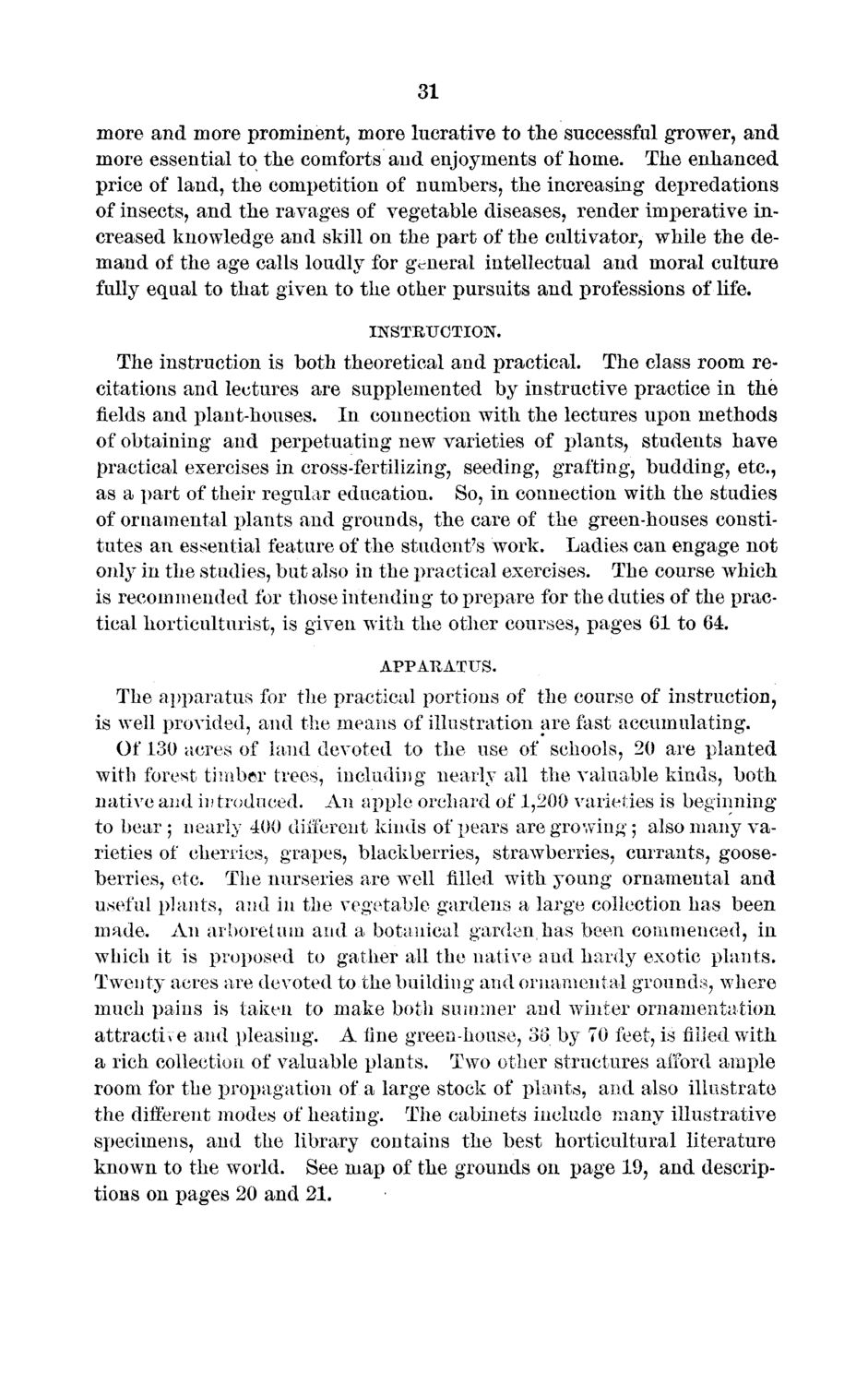| |
| |
Caption: Board of Trustees Minutes - 1873
This is a reduced-resolution page image for fast online browsing.

EXTRACTED TEXT FROM PAGE:
31 more and more prominent, more lucrative to the successful grower, and more essential to the comforts and enjoyments of home. The enhanced price of land, the competition of numbers, the increasing depredations of insects, and the ravages of vegetable diseases, render imperative increased knowledge and skill on the part of the cultivator, while the demand of the age calls loudly for general intellectual and moral culture fully equal to that given to the other pursuits and professions of life. INSTRUCTION. The instruction is both theoretical and practical. The class room recitations and lectures are supplemented by instructive practice in the fields and plant-houses. In connection with the lectures upon methods of obtaining and perpetuating new varieties of plants, students have practical exercises in cross-fertilizing, seeding, grafting, budding, etc., as a part of their regular education. So, in connection with the studies of ornamental plants and grounds, the care of the green-houses constitutes an essential feature of the student's work. Ladies can engage not only in the studies, but also in the practical exercises. The course which is recommended for those intending to prepare for the duties of the practical horticulturist, is given with the other courses, pages 61 to 64. APPARATUS. The apparatus for the practical portions of the course of instruction, is well provided, and the means of illustration are last accumulating. Of 130 acres of land devoted to the use of schools, 20 are planted with forest timber trees, including nearly all the valuable kinds, both native and introduced. An apple orchard of 1,200 varieties is beginning to bear ; nearly 400 different kinds of pears are growing; also many varieties of cherries, grapes, blackberries, strawberries, currants, gooseberries, etc. The nurseries are well filled with young ornamental and useful plants, and in the vegetable gardens a large collection has been made. An arboretum and a botanical garden has been commenced, in which it is proposed to gather all the native and hardy exotic plants. Twenty acres are devoted to the building and ornamental grounds, where much pains is taken to make both summer and winter ornamentation attractive and pleasing. A fine green-house, 36 by 70 feet, is filled with a rich collection of valuable plants. Two other structures afford ample room for the propagation of a large stock of plants, and also illustrate the different modes of heating. The cabinets include many illustrative specimens, and the library contains the best horticultural literature known to the world. See map of the grounds on page 19, and descriptions on pages 20 and 21.
| |